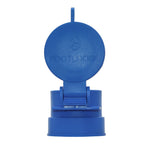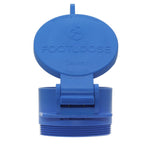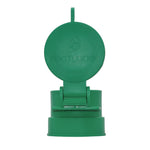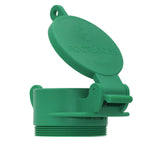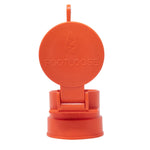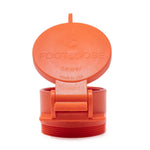You have no items in your shopping cart.
Why Winter RVing Is Worth the Effort
Winter RV travel might not be as common as summer road trips, but it offers a unique and peaceful way to explore cold-weather destinations. Imagine waking up to snow-covered landscapes, skiing or snowshoeing right outside your door, and cozying up in your RV after a day of winter activities. While the experience is magical, it does require extra preparation to ensure your RV stays warm and functional in freezing temperatures.
With the right gear and a few adjustments to your RV setup, you can enjoy the beauty of winter without sacrificing comfort. Here are some practical tips for staying warm, keeping your RV safe, and making the most of your winter camping adventure.
Essential Tips for Winterizing Your RV
Winterizing your RV is one of the most important steps for cold-weather travel. If you don’t properly prepare your RV, freezing temperatures can cause major damage, especially to your plumbing system. Here’s how to get your rig winter-ready:
1. Insulate Your RV
Insulating your RV is critical for staying warm and preventing heat from escaping. While most RVs have basic insulation, you’ll want to enhance it for winter travel.
Insulation Tips:
- Add Reflective Insulation: Use reflective insulation (like Reflectix) on your windows to prevent heat loss and block out cold drafts.
- Foam Inserts: Place foam inserts or thermal curtains over windows and vents to keep the cold air out.
- Door Seals: Check the seals around doors and windows for any cracks or gaps, and replace them if necessary to prevent drafts.
For more insulation ideas, check out RV Inspiration:
2. Winterize Your RV’s Plumbing
Frozen pipes can be a nightmare for winter RV travelers. To avoid expensive repairs, make sure to properly winterize your RV’s plumbing system.
Steps to Protect Your Pipes:
- Drain and Flush: Before hitting the road, drain all water from your fresh water tank, water heater, and pipes.
- Use Antifreeze: Pour RV antifreeze into your plumbing system to prevent water from freezing inside your pipes.
- Heated Water Hose: If you’ll be hooked up to a campground water supply, invest in a heated water hose to keep your water line from freezing.
For detailed instructions on how to winterize your RV’s plumbing, check out Camping World’s winterizing guide:
3. Protect Your Tanks
Just like your pipes, your holding tanks are at risk of freezing in cold weather. To prevent this, consider installing tank heaters or using an RV skirt to keep cold air from circulating underneath your RV.
Tank Protection Options:
- Heated Tank Pads: These pads are designed to keep your fresh water, gray, and black tanks from freezing.
- RV Skirting: An RV skirt helps insulate the underside of your rig, protecting your tanks and keeping the interior warmer.
EZ Snap RV Skirting offers easy-to-install skirting options that work well for winter RV travel:
Staying Warm During Winter RVing
Once your RV is winterized, the next challenge is staying warm and cozy inside. Here are some tips to keep the chill at bay:
1. Use Space Heaters and Electric Blankets
While your RV’s furnace is your main source of heat, supplementing it with space heaters or electric blankets can keep you extra warm. Space heaters are great for warming small areas like the bedroom or bathroom, while electric blankets make chilly nights more comfortable.
Pro Tip:
Choose ceramic or oil-filled electric space heaters, which are safer and more energy-efficient than propane heaters. Always make sure heaters are placed in a stable, well-ventilated area away from flammable materials.
2. Maximize Ventilation to Prevent Condensation
One challenge of winter RVing is condensation. When warm air from inside your RV meets the cold windows and walls, moisture can build up, leading to mold or mildew.
Tips to Reduce Condensation:
- Ventilation: Keep vents slightly open to allow moist air to escape, even in cold weather.
- Dehumidifier: Use a small portable dehumidifier to remove excess moisture from the air.
- Absorbent Products: Consider moisture-absorbing products like DampRid to prevent dampness inside your RV.
3. Layer Up for Warmth
Even with your RV’s heating system working efficiently, dressing in layers can help you stay warm without cranking up the heat. Invest in thermal clothing, wool socks, and cozy blankets to maintain a comfortable temperature inside.
For high-quality thermal gear, check out REI:
Driving Safely in Winter Conditions
RVing in winter often means navigating icy roads and snowy conditions, which can be challenging if you’re not prepared. Here are some tips to help you drive safely during winter RV travel:
1. Check Your Tires
Tire pressure drops in cold weather, so make sure your tires are properly inflated before hitting the road. Consider switching to all-season or winter tires for better traction on snowy or icy roads.
Pro Tip:
Carry tire chains with you if you plan to travel in areas with heavy snowfall. They can provide extra grip on slick surfaces, giving you more control in icy conditions.
2. Drive Slowly and Plan Your Route
Winter roads can be unpredictable, so take it slow and plan your route carefully. Avoid driving in severe weather conditions, and check for road closures or hazardous conditions along your route.
Websites like Allstays provide real-time updates on road conditions and campground availability:
3. Keep an Emergency Kit Handy
Winter travel can sometimes bring unexpected situations, so it’s important to carry a fully stocked emergency kit. Your kit should include:
- Blankets and extra clothing
- Non-perishable food and water
- Flashlights and batteries
- A shovel and snow scraper
- Tire chains and flares
Finding Winter-Friendly Campgrounds
Not all campgrounds are open year-round, so you’ll need to do some research to find campgrounds that are equipped for winter travelers. Many national parks and private campgrounds offer winter camping, but it’s essential to check for amenities like electricity, heated bathhouses, and plowed roads.
Popular Winter Campgrounds:
- Yellowstone National Park: Offers a winter camping experience with access to snowmobiling and cross-country skiing.
- Glacier National Park: Open year-round with limited services during winter months.
- Tahoe Valley Campground: Located near Lake Tahoe, this campground is ideal for winter RVers looking to hit the slopes.
For more winter campground recommendations, check out Campendium:
RVing in winter can be a magical experience, offering the opportunity to explore snow-covered landscapes, enjoy winter sports, and experience the peace of off-season travel. However, it’s essential to prepare your RV for the cold and take the necessary precautions to stay safe and warm. By winterizing your RV, investing in proper insulation, and planning your route carefully, you can enjoy all the benefits of winter RV travel without the challenges.



